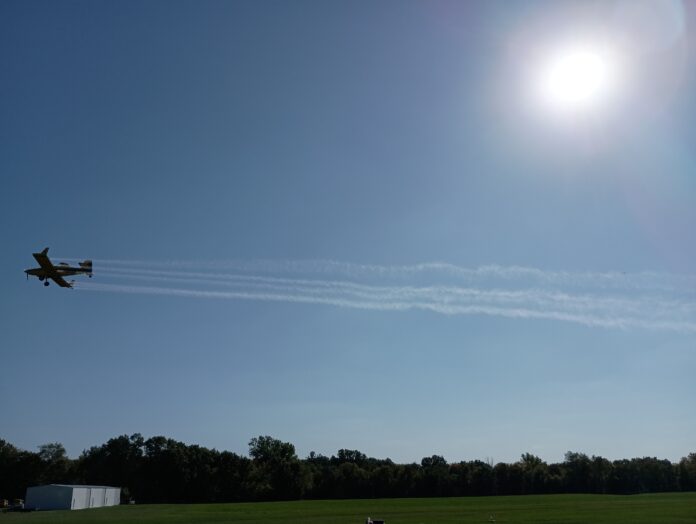MICHIGAN — In October 2023, a training held in Lansing, Michigan, taught forest health protection managers about the most effective tools to fight the spongy moth, an invasive insect that continues to cause major defoliation across the eastern United States and beyond.

For decades the Forest Service has developed different methods of managing spongy moth, including aerial pesticide application to slow its spread. Spongy moth is the main target of forest pest sprays in the eastern United States. Populations of spongy moth have greatly increased in the last couple of years, and its range has expanded into the Midwest and South.
The October training covered spray aircraft and aerial application methods. Over 30 forest health protection managers from 13 cooperator states and USDA Forest Service staff attended the training, which was conducted by the Forest Service’s Eastern Region Forest Health Protection team, along with the Aerial Application Safety Council, and was sponsored by the National Lymantria Management Board.
“We had really good participation from states that have spongy moth programs,” said John Kyhl, the Eastern Region’s pesticide use coordinator. “We also had an individual from Ontario, Canada, that heard about the training opportunity and made arrangements to attend.”
With turnover of experienced forest managers and arrival of new staff, there’s a big need for aerial pesticide application training, which has not been offered since 2018 due to postponements during the pandemic. “There have been a number of retirements and other staff changes at both the federal level and with state cooperators in recent years, and the trend may continue in the future,” said Kyhl.
The training was divided into two sessions. Morning sessions took place in the classroom and covered the basics of aerial application, including droplets, humidity, weather effects and more; aviation safety and briefings; project planning and organization; and common pesticides for managing spongy moth.
In the afternoon sessions, hands-on modules at the airport gave students a closeup view of spray aircraft and equipment. Topics included design and construction, spray nozzles, inspections, software and aircraft tracking. Additional hands-on sections covered aircraft calibration (establishing the pesticide flow rate) and characterization (establishing the number and size of spray droplets released) of spray aircraft and equipment. Fixed-wing aircraft and a helicopter were on site for students to view.
Another aerial application training session is tentatively planned for 2025 for new staff or for those who want a refresher.





